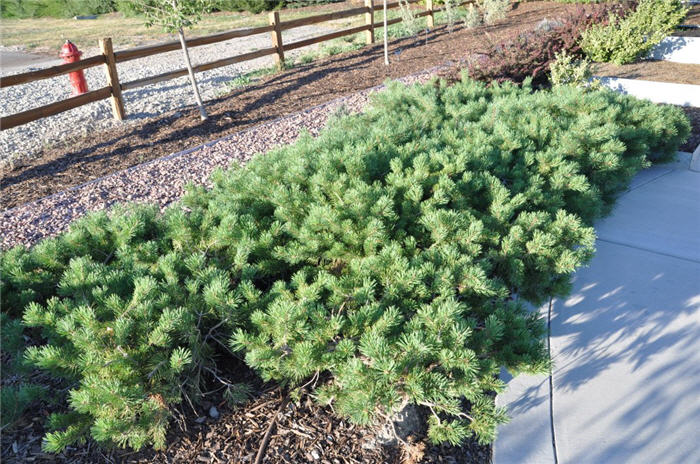| Botanical Name: Pinus sylvestris 'Hillside Creeper' | |
| Common Name: Hillside Creeper Scotch Pine |

-
Anatomy
-
Culture
-
Design
Plant Type
Conifer, Shrub
Height Range
1-3'
Flower Color
n/a
Flower Season
n/a
Leaf Color
Green, Yellow Green
Bark Color
Brown, Grey
Fruit Color
Brown
Fruit Season
Winter, Fall
Sun
Full
Water
Medium
Growth Rate
Fast, Moderate
Soil Type
Sandy, Clay, Loam, Rocky, Unparticular
Soil Condition
Average, Rich, Poor, Well-drained, Dry
Soil pH
Acid, Neutral
Adverse Factors
n/a
Design Styles
English Cottage, Japanese, Meadow, Mediterranean, Ranch, Seascape, Spanish, Woodland
Accenting Features
Specimen, Unusual Foliage, Unusual Shape
Seasonal Interest
Winter
Location Uses
Background, Entry, Perennial Border, Shrub Border, Foundation, Walls / Fences, With Rocks
Special Uses
Cascade, Small Spaces
Attracts Wildlife
n/a
Information by: Stephanie Duer
Photographer: Linda Engstrom
Photographer: Linda Engstrom
-
Description
-
Notes
This Scotch pine cultivar is a fast-growing (12 inches per year), prostrate, spreading, needled evergreen. Over the first 8-10 years, it typically grows 2 feet tall but spreads to 8 feet wide. Growth rate slows considerably as plant ages. Light green, twisted needles in bundles of 2 turn an attractive yellowish green in winter. A nice contrast with low-growing junipers or creeping Oregon grape.
Grow in full sun and well-drained soil; though it prefers loamy, acidic soil it is tolerant of poorer, drier soils. Generally considered tolerant of city conditions (pollution).